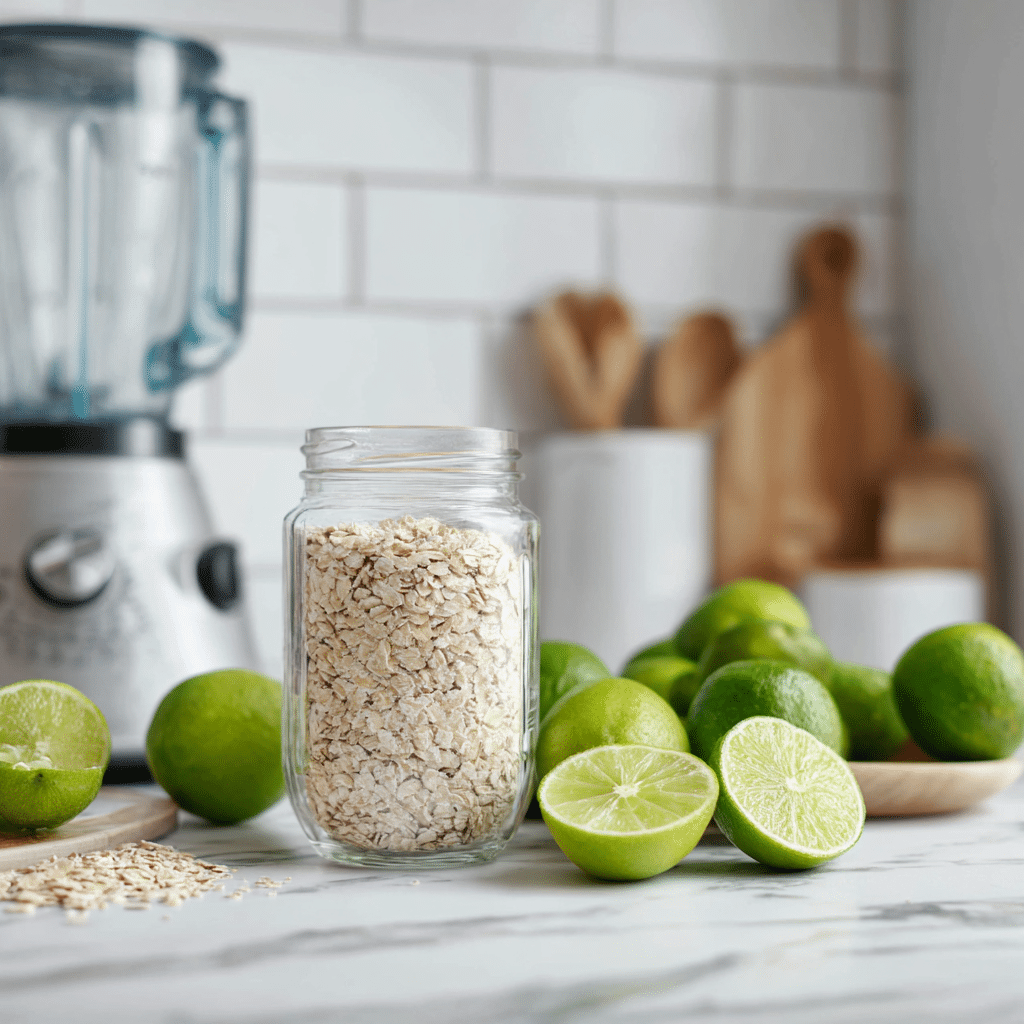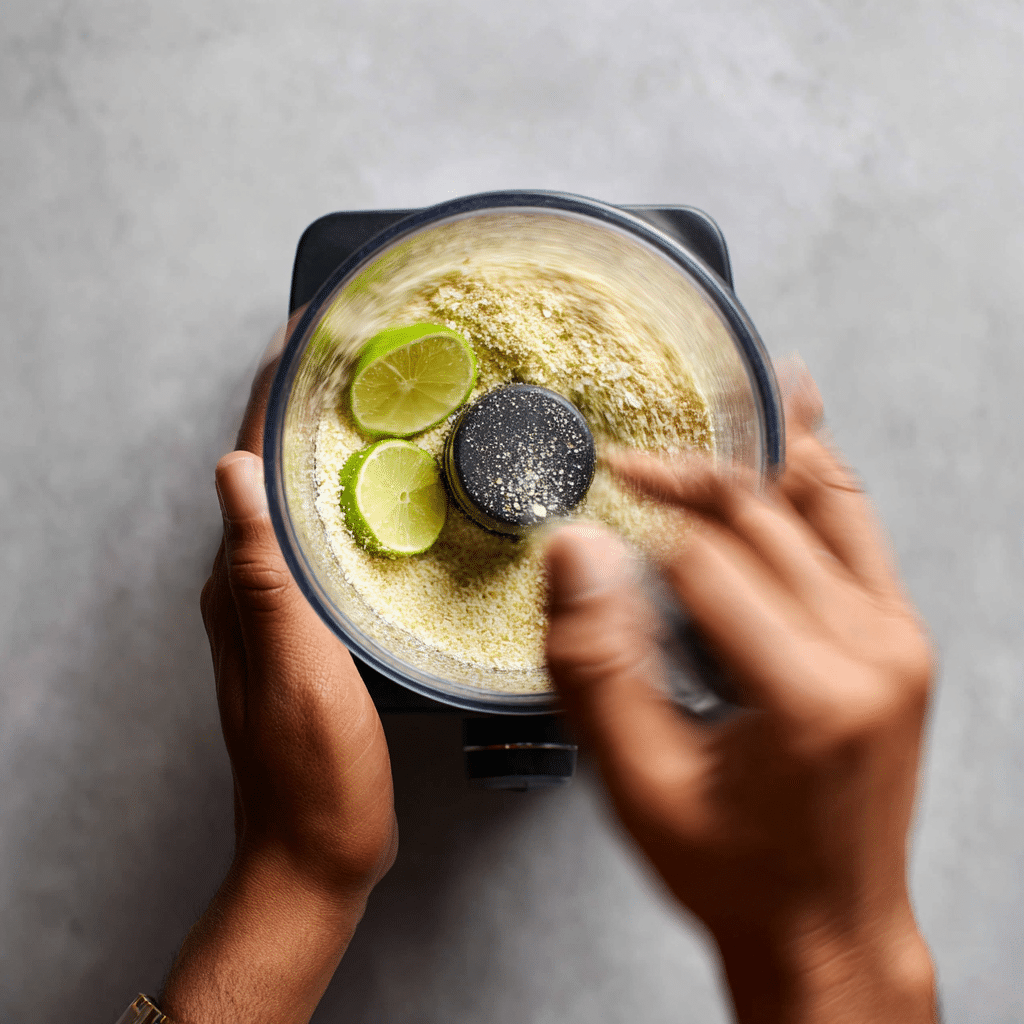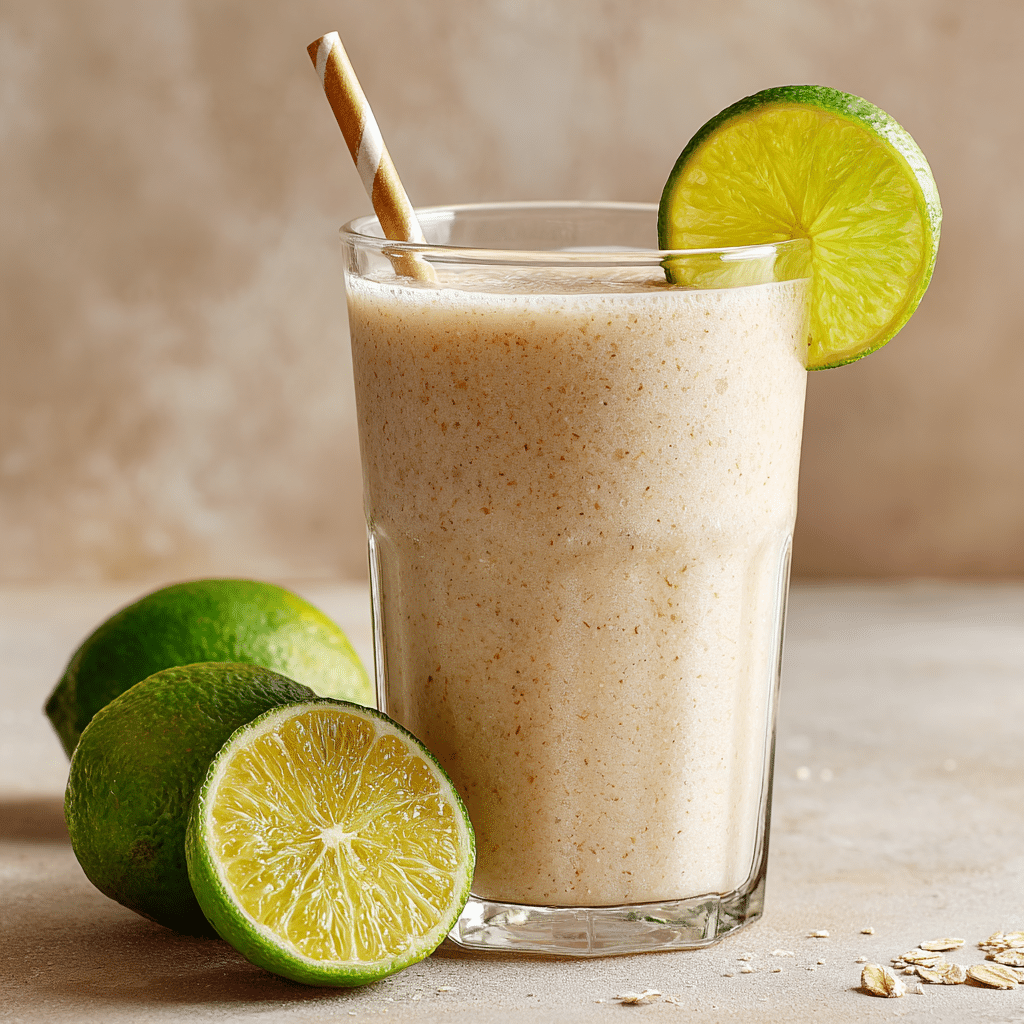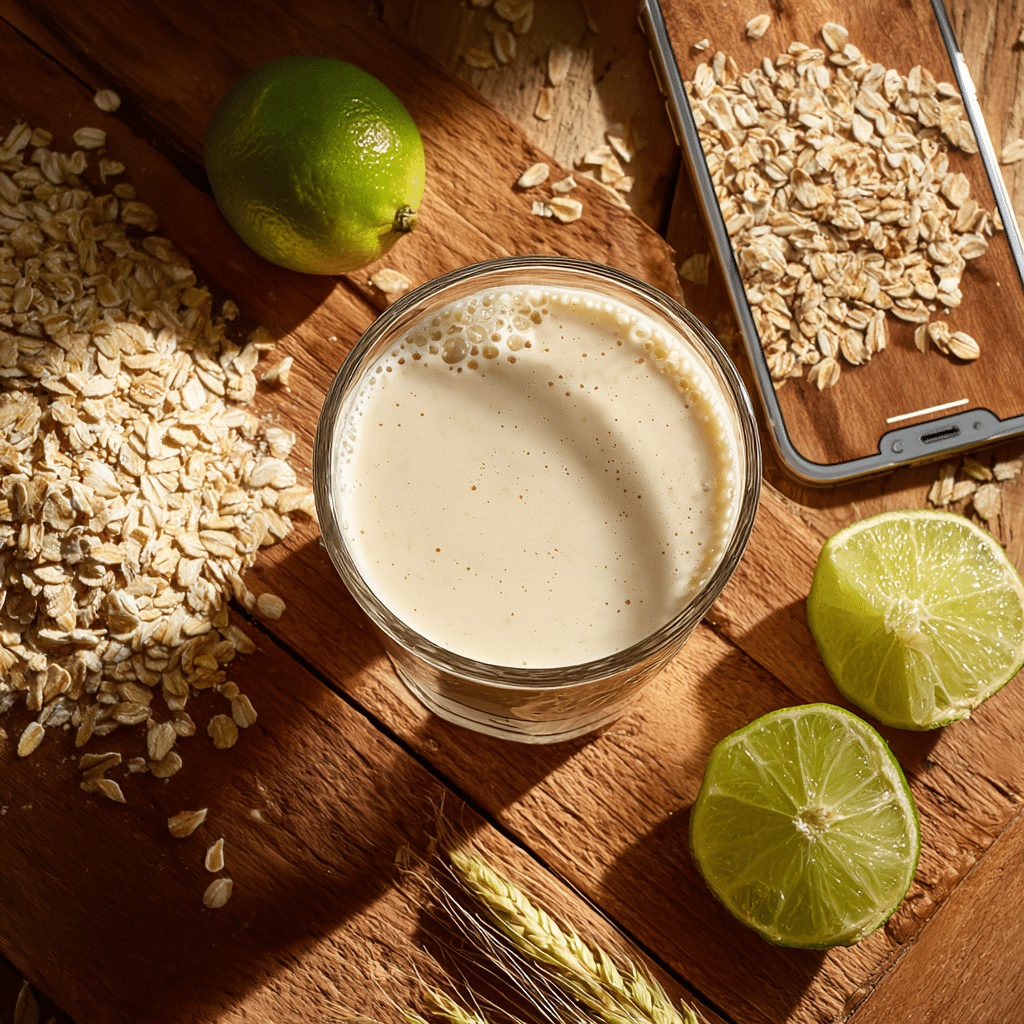Oatzempic craze is sweeping across social media as the latest so-called “natural” solution for fast weight loss. Made with just oats, water, and lime juice, this viral drink has been hailed as a homemade alternative to Ozempic, the prescription drug originally developed for diabetes. But can something so simple actually lead to lasting results—or is it another health fad that promises more than it delivers? In this article, we’ll break down what the Oatzempic trend is all about, what science and dietitians say, and what you should really know before swapping your breakfast for this viral blend.
Table of Contents
1: My Journey with Fads & the Rise of Oatzempic
From Tuscany to TikTok: A Chef’s View on Wellness Trends
The Oatzempic craze caught my eye not because of its ingredients—but because of its promise. As someone raised in Tuscany and trained in classic Italian kitchens, food has always been sacred. But when I had to go gluten-free, everything changed. I started questioning everything I once believed about nourishment. That’s why trends like this one fascinate me—they claim to solve deep-rooted struggles with a single sip.
On TikTok, Oatzempic is portrayed as a magical drink that can “melt pounds” with just oats, water, and lime juice. Videos promise dramatic transformations—sometimes 40 pounds lost in two months. To someone who’s felt the frustration of fatigue, bloating, and weight plateaus, I understand the appeal. We all want answers. But I’ve learned that chasing extremes often leads us further from real wellness. And that’s what brings us to the heart of this viral moment.

What Exactly Is the Oatzempic Drink?
The Oatzempic drink is surprisingly simple. The basic version includes:
- ½ cup of rolled oats
- 1 cup water (sometimes soaked overnight)
- Juice from half a lime or lemon
- Optional: cinnamon, chia seeds, or ginger
Everything is blended into a smoothie-like drink and consumed first thing in the morning, often as a meal replacement. Its name is a mashup of “oats” and Ozempic, the brand-name injection used to treat type 2 diabetes—and now, often off-label, for weight loss.
Supporters claim Oatzempic “activates metabolism,” curbs cravings, and promotes fullness. But experts argue that it’s more about calorie reduction than metabolic magic. Still, the Oatzempic craze has gained serious traction, driven by slick video edits, weight-loss promises, and the appeal of natural simplicity.
2: Oatzempic Craze—Science or Sensationalism?
Can Oatzempic Actually Help You Lose Weight?
The Oatzempic craze hinges on one powerful promise: dramatic weight loss without prescriptions or strict dieting. But what does science say about it?
According to registered dietitians like Lisa Valente from Healthline, there’s little evidence to support the drink’s effectiveness for lasting weight loss. In fact, she calls it “clever marketing for something that has no merit behind it.” Why? Because while oats are healthy, a blended drink made of oats, lime juice, and water doesn’t replicate what prescription medications like Ozempic do in the body.
Ozempic works by slowing digestion, regulating blood sugar, and reducing appetite through a GLP-1 hormone mimic. Oatzempic, on the other hand, works—if at all—by lowering daily calorie intake. And while that can lead to initial weight loss, it’s not a magic solution. Maggie Evans, a care specialist with 9amHealth, warns that this kind of restrictive habit might trigger a yo-yo dieting cycle. That can lead to losing muscle mass, lowering metabolism, and even gaining more weight in the long run.
Nutritional Reality Check
Let’s break it down. Oats are indeed a powerhouse whole grain. They contain fiber—especially beta-glucan—that helps you feel full and supports heart health. But when you blend half a cup of oats with water and lime and call it a meal, something vital goes missing: nutritional balance.
This viral drink lacks protein, healthy fats, and key vitamins and minerals. That means if you’re drinking Oatzempic in place of a complete meal, you’re shortchanging your body. Over time, this can lead to side effects like fatigue, irritability, and even menstrual irregularities or hair loss—especially in people already undernourished.
Experts agree: drinking oats in liquid form may be low in calories, but it’s not automatically healthy. The Oatzempic craze might suppress appetite temporarily, but it doesn’t feed your body what it truly needs for sustainable wellness.

3: Better Alternatives to the Oatzempic Craze
How to Lose Weight Healthily and Sustainably
The Oatzempic craze may offer a quick fix, but what most people really need is a long-term approach rooted in nourishment, not restriction. According to the CDC, sustainable weight loss means losing about 1 to 2 pounds per week through consistent, moderate changes in eating and activity habits.
So, what works better than oat water and lime? Eating real meals that contain fiber, protein, and healthy fats. That might mean swapping sugary cereal for eggs with sautéed greens, or enjoying a protein smoothie with chia and berries instead of skipping breakfast altogether. The key is balance—meals that satisfy and fuel your body.
In addition, sustainable fat loss depends on non-food factors: quality sleep, hydration, stress management, and regular movement. It’s not about overhauling your life overnight. Start small. Add a daily walk. Drink more water. Choose whole foods over packaged ones. These small shifts have lasting impact, unlike extreme trends.
Natural Alternatives to Weight-Loss Drugs
For those looking for natural options, there are gentler—and more nourishing—paths than the Oatzempic craze. Foods that naturally support satiety and metabolism include:
- Legumes (lentils, chickpeas, black beans)
- Leafy greens and cruciferous vegetables
- Lean proteins like fish, tofu, or eggs
- Fermented foods like yogurt and kimchi
- Anti-inflammatory herbs like turmeric and ginger
Some people also explore teas such as green tea or dandelion root, which may mildly support digestion. But no drink, supplement, or superfood replaces the basics: fueling your body, moving regularly, and building healthy routines.
In short, there’s no shortcut to sustainable wellness. But there are many supportive tools. A hearty bowl of oatmeal with nuts and fruit will take you much further than a viral drink that fades with the algorithm.
4: What Social Media Won’t Tell You
The Dark Side of Viral Health Trends
One reason the Oatzempic craze has spread so fast is because it taps into a powerful mix: hope, simplicity, and visuals. A before-and-after photo. A quick recipe. A claim of 40 pounds lost in 2 months. In just 10 seconds, a TikTok video can convince you that a three-ingredient drink is the answer to years of struggle.
But here’s the truth: trends like this often distort reality. What social media doesn’t show are the cravings, the fatigue, the rebound weight gain, or the emotional rollercoaster of failed expectations. According to medical experts, many viral weight-loss hacks promote disordered eating behaviors—under-fueling, obsessing over numbers, or relying on single foods as “cures.”
It’s not just misleading—it can be dangerous. Some influencers market these ideas with no nutrition training or medical background. And once a trend catches fire, it becomes hard to separate genuine advice from attention-seeking stunts.
Let’s Talk About the Biggest Weight-Loss Killer
If there’s one thing more damaging than fad drinks or overnight promises, it’s the cycle of self-sabotage they trigger. Yo-yo dieting—losing weight fast and gaining it back—doesn’t just hurt your metabolism. It chips away at confidence. It turns eating into a battle. And it teaches people to ignore their bodies instead of listening to them.
That’s why experts agree: the biggest killer of long-term weight loss is unsustainable behavior driven by unrealistic expectations. If you’re constantly chasing shortcuts instead of building habits, your progress will always be temporary.
The Oatzempic craze is just one example. Next month, it’ll be something else. But your body doesn’t need trends. It needs consistency, nourishment, rest, and respect.

5: Conclusion
The Oatzempic craze may sound appealing—a simple drink with big promises—but the reality is far more complex. While oats are nutritious, turning them into a quick-fix miracle is misleading. Sustainable weight loss isn’t flashy. It’s slow, balanced, and rooted in daily habits—not viral trends.
If you’re trying to improve your health, start with small, nourishing choices that feel good and last. Your body deserves more than a trend. It deserves respect, fuel, and care.
How do you lose weight healthily and sustainably?
Oatzempic is marketed as a weight-loss drink due to its low-calorie ingredients and ability to create short-term fullness. However, it lacks essential nutrients and is not supported by clinical studies. Health professionals caution against using it as a long-term solution.
How do you lose weight healthily and sustainably?
Healthy weight loss comes from gradual lifestyle changes: eating balanced meals, staying active, managing stress, and getting enough sleep. Slow and steady loss—1 to 2 pounds per week—is proven to be more effective and lasting.
What natural alternatives are there to weight-loss injections?
There are no magic replacements, but real food can help: fiber-rich meals, lean proteins, fermented foods, regular movement, and hydration. Green tea, turmeric, and fermented vegetables may support digestion, but they’re part of a whole-body approach—not a shortcut.
What is the name of the viral weight-loss tea?
There are many, including “internal shower” drinks and so-called “flat tummy teas.” These often contain laxatives or diuretics and are not medically recommended for true fat loss or long-term health.
What is the biggest weight-loss killer?
Yo-yo dieting. Extreme restriction followed by rebound weight gain harms metabolism, muscle mass, and mental health. The cycle erodes confidence and creates long-term difficulty in maintaining a healthy weight.

Oatzempic Craze: Is the Viral Weight-Loss Drink Worth It?
Ingredients
- 1/2 cup rolled oats
- 1 cup cold water
- Juice of 1/2 lime
- Optional: cinnamon or chia seeds
Instructions
- 1. Soak oats in water overnight or for at least 1 hour.
- 2. Add oats, soaking water, and lime juice to a blender.
- 3. Blend until smooth. Strain if desired.
- 4. Serve immediately, optionally over ice.

